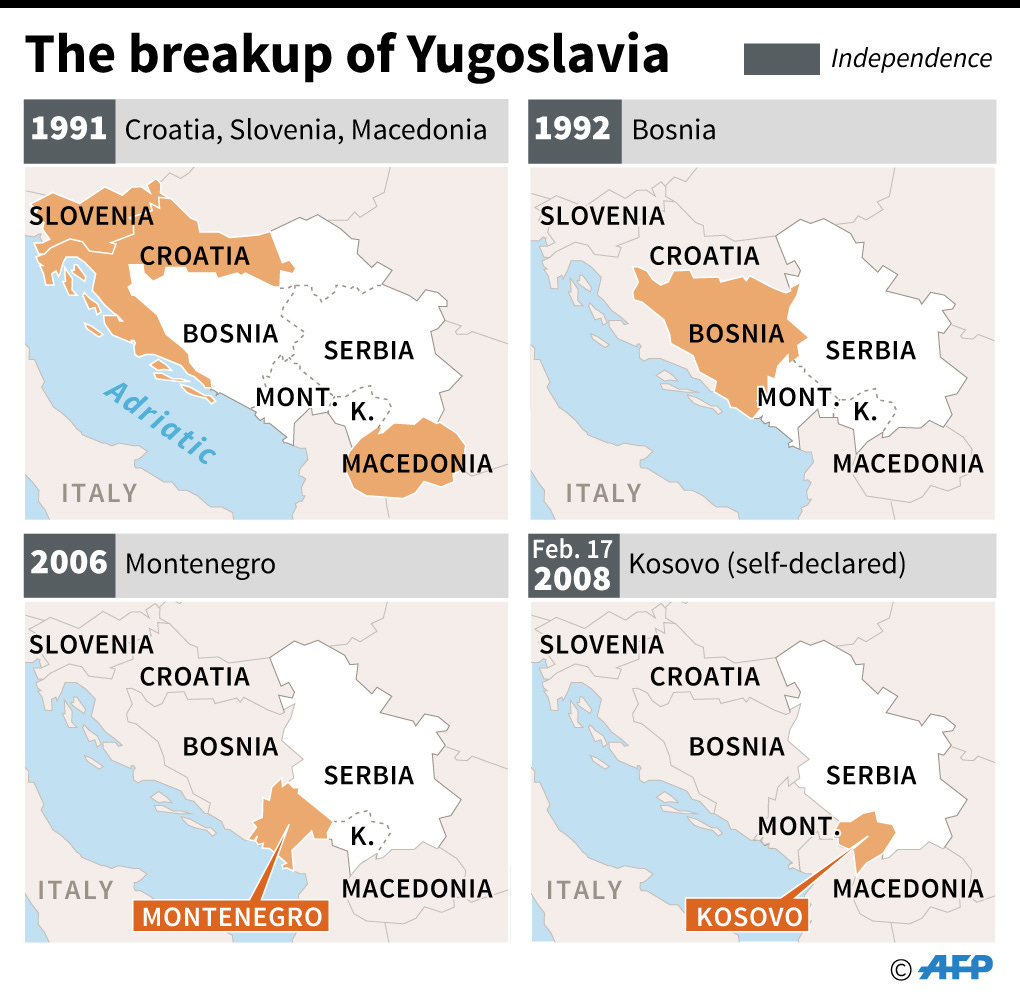Serbia and Kosovo governments cannot get along at all. They are like a divorced couple that are forced to live next door to each other. They have their blow ups, their screaming matches, and maybe an ashtray is thrown, but essentially the two governments end up papering everything over until the next fight.
How did they get into this mess, and is this current crisis different?
To begin, the creation of Yugoslavia pulled together several disparate groups and states. Religion, culture, and geography tugged at the new country immediately, threatening to pull it apart. Kosovo was a self-governing part of the Serbia state, but area was majority Albanian.
The animosity between Serbia and Kosovo harkens back to the time of the Ottoman Empire, when Kosovo and Albania became majority Muslim. Serbia was Orthodox Catholic and had been fight the Ottomans for centuries. The Ottoman empire did not exit Kosovo until 1915, when the last of its European possession were lost (bar Istanbul and the surrounding area of Thrace).
Kosovo was the last part of Serbia that was incorporated into the state and occurred after WWI. Yugoslavia could have easily pulled apart after WWII, except for the national cause and military resistance shown by Marshall Tito After the passing of Tito, Yugoslavia entered a crisis the actors have still have not resolved. When Yugoslavia broke up, all the “federated Republics” ended up as their own nations. But Kosovo was an autonomous region in Serbia. Kosovo had few national rights under Serbia. In fact, their autonomy was significantly reduce compared to the region’s rights under Tito.
Kosovans fought for independence from Serbia starting in 1990 and continuing the fight until semi-official independence in 2008. During the fighting between 1994 and 1998 the Serbia forces committed war crimes against the Kosovo population. This brought NATO reprisals and bombings quickly into Serbia, in part due to the recent memory of actions against civilians in the Bosnian War and the west’s ignoring of genocide.
In 2008 Kosovo moved from de facto to actual independence and has now been recognized by 114 countries (per Wikipedia). Those countries do NOT include Serbia, Russia or China. However, both Serbia and Kosovo do abide by the “Brussels Agreement” which allows the Serbian minority in Kosovo to have its own police force and court of appeals.
Which brings us up to current situation. There is a part of Kosovo that still has a significant Serbian majority. These citizens have special right under the Brussels Agreement. There is also a significant Kosovo population in an area of Serbia near the border.
This year a crisis blew up about Kosovo license plates and travel documents. In all of Europe, each country puts its country code on their license plates. Kosovo issued their own license plates with the designator ROK (Republic of Kosovo). Then they planned on seizing cars that don’t have Kosovo plates. Many in the Serbian regions still use the old plates issued by Serbia. The new law would effectively disallow movement of the Kosovo Serbs because of their semi-closed border.
After a lot of bluster, grandstanding, and then some violence, international pressure allowed for the compromise. It is significant compromise where both Serbia and Kosovo now allow free movement across their borders for the first time. The use of license plates was subsumed in the adoption of this which allowed freedom of movement between the two countries.
The compromise still has not been embraced by the Serbian minority in Kosovo. Road blocks and threats of violence have continued. All 600 police, local judges and Serb mayors in northern Kosovo resigned in protest to the actions. Both countries have called for calm.
Disagreements between Serbia and Kosovo or Serbian minorities and Kosovo officials escalate quickly. Not just because of historical tensions, but also because both sides know there is a definite limit to violence. Both NATO and EU forces still have peace keepers in Kosovo, and so both sides know that real violence would quickly be extinguished. Therefore much of the current crisis is performative, although it does not seem so on the ground.
Europe is working with both Serbia and Kosovo to come to an official treaty with would include Serbian recognition of Kosovo, and a guarantee of the rights of the Serbian minority.
Interestingly, Serbia and Kosovo had proposed a solution that would include a land swap so that the Serbian minority areas would move to Serbia and Kosovan minority areas in Serbia would transfer to Kosovo. This proposal kind of freaked out the EU and the United States because it would authorize a movement of borders, which upsets the “international order”.
So, to answer the question, will Serbia and Kosovo go to war? No. They will be held back by Western push back on the Kosovo government and the implied threat to Serbia should they resort to violence. But will skirmishes, distrust and lingering animosity disappear? Not in the short term.



